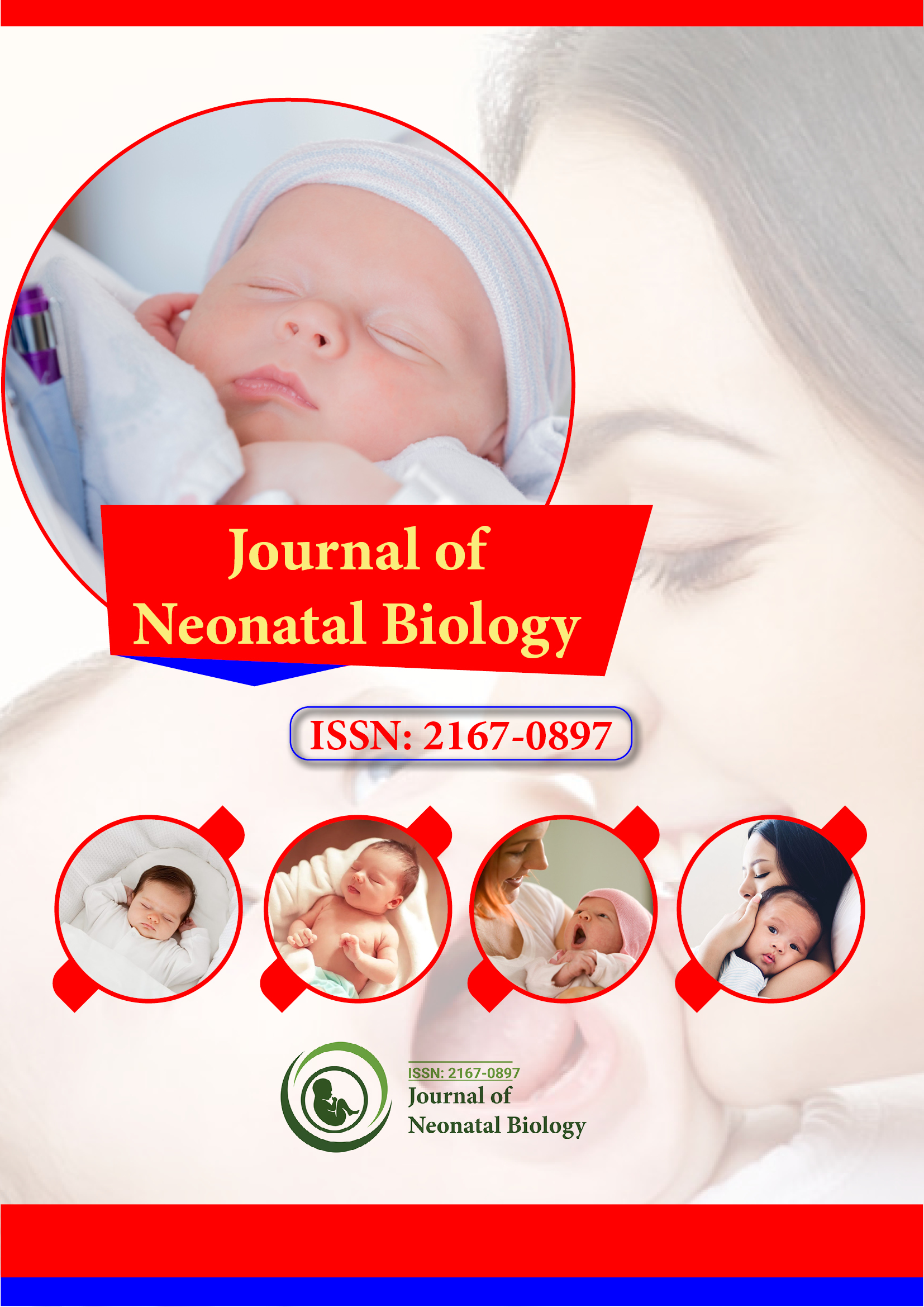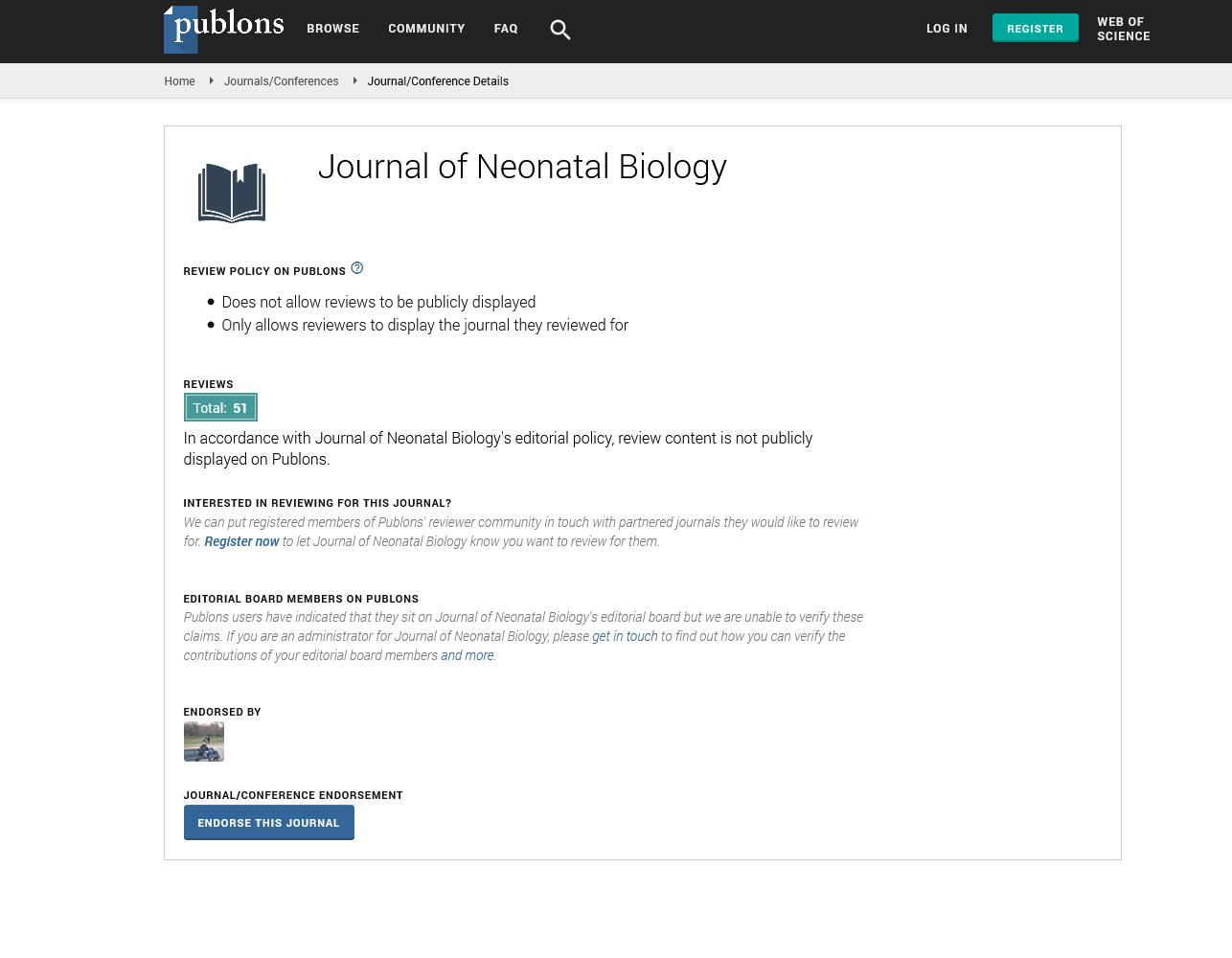Indexed In
- Genamics JournalSeek
- RefSeek
- Hamdard University
- EBSCO A-Z
- OCLC- WorldCat
- Publons
- Geneva Foundation for Medical Education and Research
- Euro Pub
- Google Scholar
Useful Links
Share This Page
Journal Flyer

Open Access Journals
- Agri and Aquaculture
- Biochemistry
- Bioinformatics & Systems Biology
- Business & Management
- Chemistry
- Clinical Sciences
- Engineering
- Food & Nutrition
- General Science
- Genetics & Molecular Biology
- Immunology & Microbiology
- Medical Sciences
- Neuroscience & Psychology
- Nursing & Health Care
- Pharmaceutical Sciences
Editorial - (2021) Volume 0, Issue 0
Editorial on Neonatal Respiratory Distress Syndrome
Henk Schierbeek*Received: 15-Jun-2021 Published: 07-Jun-2021
Editorial
Neonatal respiratory distress syndrome
Neonatal respiratory distress syndrome (RDS) is a problem often seen in premature babies. The condition makes it hard for the baby to breathe. Respiratory distress syndrome (RDS) occurs in premature babies whose lungs are not fully developed. The earlier the infant is born, the more likely it is for the baby to have RDS and to need extra oxygen and help breathing. RDS is caused by the baby not having enough surfactant in the lungs. Surfactant is a liquid made in the lungs at about 26 weeks of pregnancy. As the fetus grows, the lungs make more surfactant. Surfactant coats the tiny air sacs in the lungs and helps to keep them from collapsing (Picture 1). The air sacs must be open to allow oxygen to enter the blood from the lungs and carbon dioxide to be released from the blood into the lungs. While RDS is most common in babies who are born early, other new-borns can get RDS.
The disease is mainly caused by a lack of a slippery substance in the lungs called surfactant. This substance helps the lungs fill with air and keeps the air sacs from deflating. Surfactant is present when the lungs are fully developed.
Factors that can increase the risk of RDS include:
• brother or sister who had RDS
• Diabetes in the mother
• Cesarean delivery or induction of labor before the baby is full-term
• Problems with delivery that reduce blood flow to the baby
• Multiple pregnancy (twins or more)
• Rapid labor
• Most cases of RDS occur in babies born before 37 to 39 weeks. The more premature the baby is, the higher the chance of RDS after birth. The problem is uncommon in babies born full-term (after 39 weeks). Siblings with RDS infection
• Twin or multiple births
• C-section delivery
• Mother has diabetes
• Infection
• Baby is sick at the time of delivery
• Cold, stress or hypothermia. Baby cannot keep body temperature warm at birth.
Signs and Symptoms
Babies who have RDS may show these signs:
• Fast breathing very soon after birth
• Grunting “ugh” sound with each breath
• Changes in color of lips, fingers and toes
• Flaring (widening) of the nostrils with each breath
• Chest retractions. Skin over the breastbone and ribs pulls in during breathing.
Diagnosis
The diagnosis is made after examining the baby and seeing the results of chest X-rays and blood tests.
Treatment
Oxygen: Babies with RDS need extra oxygen. It may be given in several ways:
• Nasal cannula: A small tube with prongs is placed in the nostrils.
• CPAP (Continuous Positive Airway Pressure): This machine gently pushes air or oxygen into the lungs to keep the air sacs open.
• Ventilator for severe RDS: This is a machine that helps the infant breathe when they cannot breathe well enough without help. A breathing tube is put down the infant’s windpipe. This is called intubation (in too BAY shun). The infant is then placed on the ventilator to help them breathe.
Surfactant: Surfactant can be given into the baby’s lungs to replace what they do not have. This is given directly down the breathing tube that was placed in the windpipe.
IV (Intravenous) catheter treatments: A very small tube called a catheter is placed into one or two of the blood vessels in the umbilical cord. This is how the infant gets IV fluids, nutrition and medicines. It is also used to take blood samples.
Medicines: Sometimes antibiotics are given if an infection is suspected. Calming medicines may be given to help ease pain during treatment.
Citation: Thiel MT (2021) Editorial on Neonatal Respiratory Distress Syndrome. J Neonatal Biol. 10: 299.
Copyright: © 2021 Thiel MT. This is an open-access article distributed under the terms of the Creative Commons Attribution License, which permits unrestricted use, distribution, and reproduction in any medium, provided the original author and source are credited.

